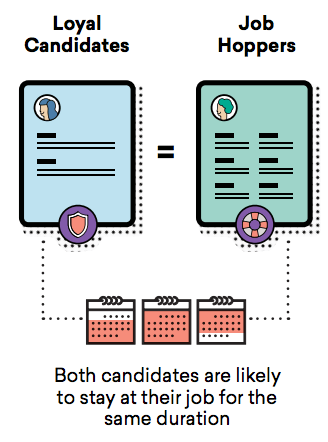
Remember that you are competing against a huge number of job openings for hourly employees. In the city of Houston, on Craigslist, there are around 650 job postings created each day for hourly employees. In Los Angeles, there are over 800. How do you stand out from the crowd? Our top suggestion: make it easy for candidates to apply. Driven by the high turnover in hourly positions, many managers decide that they only want employees who are interested in their specific business. Without realizing it, these businesses actually make it really hard for great candidates to apply for job openings. These employers ask for cover letters, expect applicants to respond to emails, or ask applicants to participate in a recruitment process that takes several weeks. {{banner-cta}} That’s just not how it works for these positions. Your employees don’t write cover letters, they use text instead of emails, and they need a job ASAP. The time and effort a candidate puts into an hourly job application does not predict future job performance or turnover. Approach recruiting as if it is your job to convince the best applicants to work for you in the least amount of time.
Pro-tip: Post your job a lot more often
Each post on Craigslist, if it includes requirements discussed previously, will generate on average 25 applicants per posting for an hourly position. To generate 100 resumes, you may need to repost 4 times to get 1 hire.
Set Realistic Expectations
The most common frustration from managers is how hard it is to find quality employees. Finding an applicant who is available, is within the desired wage range, lives within close proximity to the location, speaks English, and has relevant experience can feel like an exercise in futility. If you have accumulated 100 resumes for an hourly position and still have not found an appropriate candidate, it’s time to rethink your expectations. Consider the applicants you’re getting and adjust your expectations of minimum requirements before you finish your search for an employee. For example, are you getting too few applicants with experience as a front-of-house manager? Maybe that shouldn’t be a minimum requirement. Smart hiring managers move quickly to raise or lower standards as needed. When standards can’t be lowered, increase the wage rate or adjust expectations on scheduling, distance or other requirements

Pro-tip: Review in bulk
Hold off on reviewing resumes until you’ve collected enough to get a true sense of who out there is interested in your position. Don’t just check the first resumes that come in and jump to a quick conclusion. To stop yourself from frequently checking to see who has applied, set yourself a goal like 10 resumes. Once you have that many, take a peek!Do you think you should avoid hiring people who’ve hopped jobs in the past? Think again. An extensive study by Evolv looked at 1,000 employee’s tenure with their current employer and their previous job-hopping past. Past job hopping did not predict the likelihood of future turnover. Candidates whose resumes demonstrated previous job loyalty (with few positions held for less than 6 months) left their next jobs just as often as the job hoppers (those who held more short-duration jobs). You may be limiting your talent pool based on a false assumption that a record of steady job employment is predictive of a future loyal employee.
Past job hopping did not predict the likelihood of future turnover.

Stick to your Minimum Requirements
FROM A FORMER HR CONSULTANT: "I had a client who was a restaurant manager. He stuck to his minimum requirement of only interviewing candidates who lived within walking distance of the restaurant. The manager found that turnover was lower for those who lived nearby. He’d rather hire and train an inexperienced hire who lived close by than hire an experienced candidate who lived further away. He believed anyone could learn the skillsets to perform well at the job. It wasn’t easy for him to stick to this minimum requirement when he received great resumes from candidates in affordable wage ranges that lived far away. But after many years and many employees, he had learned better. He protected himself from his own tendencies to reconsider a sharp candidate by sticking to his minimum requirement."
The Homebase Guide to Hiring
In the Homebase Guide to Hiring, we cover:

1. Introduction2. Writing a Job Post that Works3. Acing the Interview as the Hiring Manager4. Effective Employee Onboarding
5. Evaluating Candidates in a Competitive Job Market
Your business can use the tips and tricks in this guide to hire the employees you need, reduce turnover, and save a lot of time.
Share post on

Homebase Team
Remember: This is not legal advice. If you have questions about your particular situation, please consult a lawyer, CPA, or other appropriate professional advisor or agency.
Popular Topics
Homebase is the everything app for hourly teams, with employee scheduling, time clocks, payroll, team communication, and HR. 100,000+ small (but mighty) businesses rely on Homebase to make work radically easy and superpower their teams.








